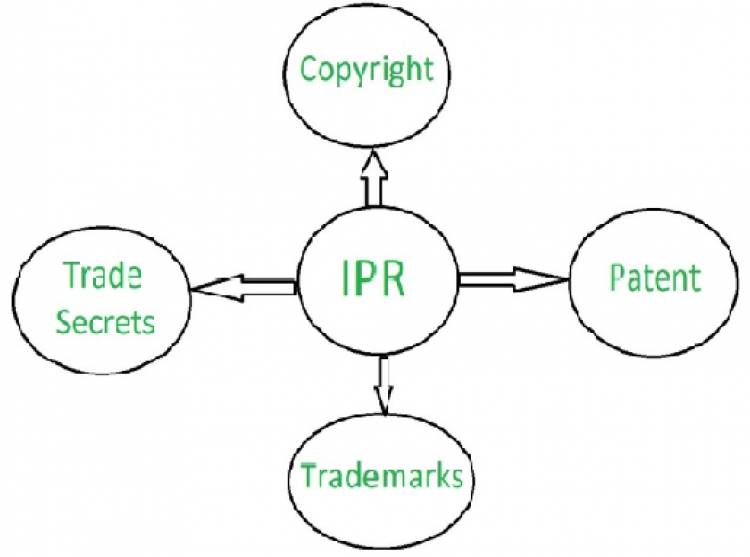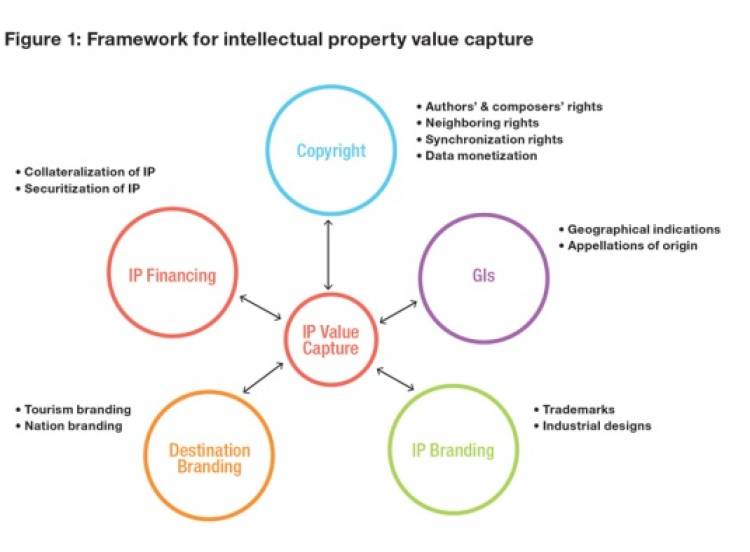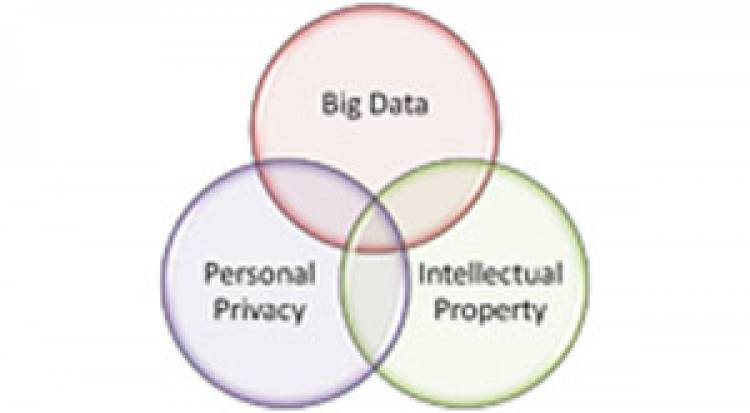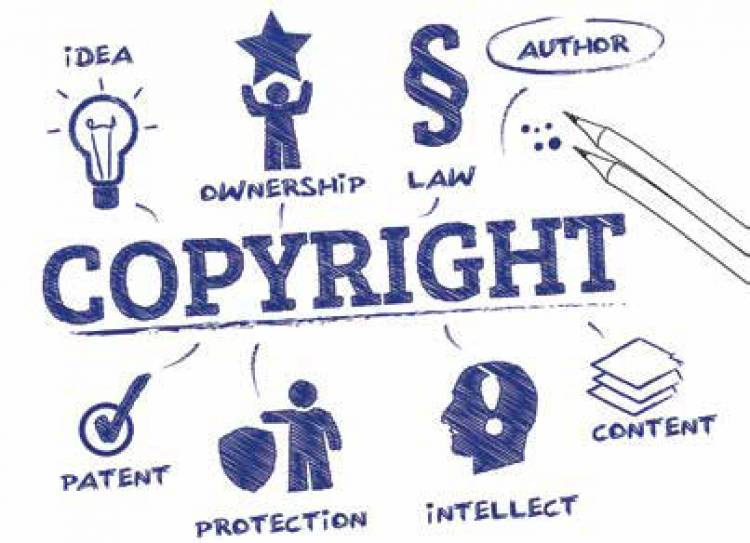Discovering New Value in Intellectual Property
The definition of IP has not developed for 10 years. In the years 1618 when the British Law: the Monopoly Statute was created, the roots of IP can be linked back to 1623. Intellectual property has since evolved considerably. Patent licensing is no longer restricted to the defense of ideas and innovations produced by an individual's intellectual exercise. The IP area has been expanded into different sectors such as trademarks, patents, rights of copyright, architecture, varieties of plants and commercial secrets, and so on.

Introduction
The definition of IP has not developed for 10 years. In the years 1618 when the British Law: the Monopoly Statute was created, the roots of IP can be linked back to 1623. Intellectual property has since evolved considerably. Patent licensing is no longer restricted to the defense of ideas and innovations produced by an individual's intellectual exercise. The IP area has been expanded into different sectors such as trademarks, patents, rights of copyright, architecture, varieties of plants and commercial secrets, and so on.
The unique trait of intangibility simplifies and complexities the definition of intellectual property (IP). The essence of an IP is so plain that it can only be grasped by gazing around you. From our tooth brown to our car, from our computers to a tiny pencil, it is all IP. We are covered by IPs. Therefore, it becomes necessary to understand what is so valuable and useful. The dynamic existence of an IP is now at stake.

IPs are shown to be very critical. An IP can amount to billions of dollars, such as a medical patent or a commercial Coca-Cola secret. It is hard to estimates the appropriate figure of your IP because of the dynamic nature of IP for an IP holder. It is the complexity of an IP that makes it very difficult to determine its correct value because it is very unlikely for an assessor to achieve an actual date because of the primal function of intangibility.
The popular complexity of trade makes it difficult to find a balanced deal, its worth is imperfect, the liquidity lacks, a lack of a position on the market in which an IP transaction is feasible, and different other explanations why it seems difficult to determine intellectual property.
Purpose of IP Valuation
The aim and goal of a project are specifically correlated with the intended result. Therefore the reason for which an IP is assessed is very important to know. Clarification of the target allows an assessor to list all variables that are important to the evaluation process, including a range of criteria that may play a key role.
Some of the purposes for which an IP's value is calculated are mentioned below:
Licensing and Franchising
-
Licensing and franchising are one of the most popular ways to use an IP.
-
The aim of these agreements is to pass, in return for some benefit (as a reward) the "freedom to use that an IP owner exercises, either exclusively or non-exclusively (depending on the types of the agreement).
-
If not the closest emergency value their IP value is worth, it is vital for the licensee or franchisor to know the exact value of its IP.
-
The worth calculation of your IP lets you obtain the royalty that you deserve.
-
The Licensee and the Franchisee are both to be handled. To confirm that the franchisor does not spend more than his real value a franchisee needs to know the accurate amount of the IP. Otherwise in the future, he will suffer a loss.
Merger, Acquisition, Joint Ventures
-
In these transactions, the IP value plays an important role.
-
A comprehensive analysis is carried out on all the assets and liabilities of the company before a business participates in the activities of some other company or undertakes it.
-
The IP in a company plays an important role in this process. The mere name of an organization like the dependency is considered to be worth millions of dollars. In other words, Reliance Corporation's trademark is highly important.
-
A trademark holds a brand's goodwill, as well as its name.
-
Therefore it is necessary to assess the actual value of the IP for the correct valuation of the assets for the entire target business.
-
Only then will a business take a good and well-informed decision on choice costs, opportunities costs, share prices, decision feasibility, the possibility of potential benefits, and other related factors.

Corporate Financing
-
These are basic financial operations in which the company's aim is to obtain capital and to which a financial institution is approached.
-
The creditor sends its IP in exchange for funds as a guarantee.
-
If an asset should be deposited as a pledge, it is extremely important to make the correct value of this asset because only the quality of such an asset can decide whether and whether or not the sum should be approved and whether or not.
-
These payments have various participants and all play an important role. Each participant often has a different reason for this operation.
-
The borrower's goal is to find out the real value of his IP and to consolidate the financial institution's claim on the amount demanded.
-
If the IP value is satisfying relative to the amount to be approved, the warranty costs for the borrower would also be decreased.
-
The correct value of an IP is needed from the point of view of a financial institution in order to make sure that the organization can easily recover the sum from the invested IP if the borrower is defaulted in paying it back.
-
Variables including flexibility and future markets for this IP are often regarded for financial institutions, as well as for the right value of the IP.

Strategic Guidance
-
For an organization, it is very important to revisit its tactics and mission plans from time to time.
-
The crucial thing in this contemporary age of modernization from a cutting edge is a swift option, early mover value, and optimal investment in a company's R&D department.
-
It is important that policymakers have accurate information on the valuation of all assets and liabilities in the sense of a win-win corporate strategy.
-
The potential prospects of a corporation will be fatal if the IP is measured or underestimated.
-
Therefore an IP owner must know the correct quality of such an IP in order to make acceptable maintenance and development arrangements.
Transfer Pricing
-
Government agencies such as tax authorities shall strictly regulate the valuation methods used for the calculation of an IP in a corporation.
-
If the business dynamics change, the anticipated value of an IP will change absolutely.
-
The IP value of a changing company will affect the company's tax burden. If there is a significant difference between the real value and the estimated value of an IP, the tax obligation of that corporation will definitely represent a very risky business health initiative.
Financial Reporting
-
According to accounting principles, the growing value of IP as an asset. There's no lack of appreciation of IP value by the International Accounting Standard Board (IASB).
-
The Panel has begun to deal explicitly with IPs differing from the gratitude class in the asset table.
-
Many important decisions like share price are affected by the impact of these shifts on the valuation of IP in a business because of important details to be exchanged with the shareholders and other actions.
-
Additional IP variables evolve and are given a greater weighting. Some of the variables which need an accurate value of an IP include, for example, variables like litigation expenses, marketing expenses, IP policy, periodic disability tests, etc.

Insurance Purposes
-
Different horizons have been opened through the production of IP.
-
IP insurance activity has already been introduced by leading insurance firms in developing countries.
-
Therefore, it becomes more than important to know the right and reliable value of an IP5 in order to assert or even obtain the IP insurance cover.
Controversy and losses
-
In the field of IP breaches, an IP owner must actively work against and be aware of them all the time.
-
It is a basic obligation of an IP owner to sue all violators when they seek to violate their IP rights if he/she wishes to protect their IP value and does not want their IP to sacrifice its uniqueness.
It is very crucial to understand that now the Indian judges agree that violators should be disciplined financially to maintain a preventive impact on future violators, not only by not breaching the privileges of IP ownership. It is obvious that to assess the exact extent of harm caused by the violation to an IP owner it is important for the holder to reflect the real value of the entire IP. Only then will the plaintiff be able to demand an amount not only for the real and obvious financial harm caused by the violation but also because of the IP's drop in value which destroyed his IP's credibility.
How the accuracy of IP value is calculated?
-
A sufficient amount was provided in this literature survey to show that IP is among the most appreciated and necessary properties. We addressed the need, the various objectives, and the many difficulties faced by the assessor in finding the proper value of an IP.
-
In comparison, it was not yet addressed the key question of finding an IP's right worth. Consequently, today, in the various research papers of multiple writers from all over the world, we will present the various methodologies, processes, techniques, and criteria accessible.
-
Initially, we would like to make it clear that it is not possible to prepare a standard guideline to systematically track the exact importance of any IP.
-
Instead, each IP is very case-specific in technique, pattern, and parameters. In other words, there is no golden level to evaluate the value of an IP simply, but the intent of the assessment and the essence of the IP should be examined in order to understand the process, which parameters will be appropriate for that particular IP.
Multiple approaches and strategies are grouped into three broad approaches depending on multiple concepts. This is the business system, the method of profits, and the expense method. Their own advantages and drawbacks are these processes.

Conclusion
You can quickly infer that none of the three methods is ideal. Each approach has its own collection of advantages and inconveniences that make it useful for a specific reason. If value calculation is conducted in order to know what the royalty rate must be if the owner chooses to license his IP. Then it is appropriate to apply the standard costing and market method. Depend on the number expended on the production of the IP, the Cost Method should provide the minimal IP value and allow the owner to know the value of an IP on established markets. It is prudent to combine various approaches with different criteria, and if a mixture of approaches is used, both methods will have the benefits of minimizing significant drawbacks.
BY-
HATIM HUSAIN












